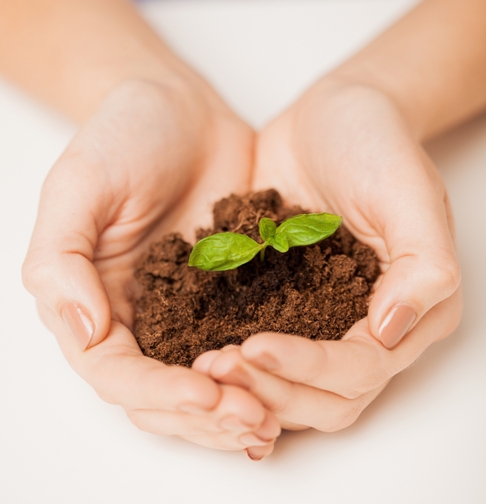
Enjoying the fruits of your labor is one of the most enjoyable aspects of being a greenhouse grower. Being surrounded by fragrant flowers or harvesting fresh vegetables for dinner that evening are just two of the many rewards gardeners gain from their hobby. Many horticulturists feel a sense of accomplishment along with their tangible rewards. After all, in order to harvest a crop, a grower must have had, at least some, influence over the way the plants grew. There is another sense of accomplishment experienced by horticulturists who start their plants from seeds. When a gardener starts a plant from seed they oversee the entire life of that plant and have more influence than if they purchased a plant which was already partially grown. This increased influence can be advantageous to the horticulturist because it gives more control over the outcome of the garden.
Advantages of Starting from Seed
For some gardeners starting from seed gives an increased sense of control and achievement because they are able to take the plant from its very beginning until the time of harvest or dormancy. But these aren’t the only reasons a greenhouse gardener should consider starting from seed. Starting from seed is less expensive than purchasing plant starts which can make a huge difference for a hobbyist on a tight budget. Also, most seeds can be sent through the mail which means a wide variety of options are available. Greenhouse hobbyists can now choose from hundreds of varieties of each vegetable or ornamental they wish to grow.
Choosing the Right Plants to Start from Seed
To a beginning seed starter the sheer number of seeds available can seem overwhelming. It may be best for hobbyists who are new to seed starting to begin with some of the plant varieties that are less difficult to germinate. Cucumbers, tomatoes and basil are all fairly easy to germinate and are good choices for the novice greenhouse hobbyist. Coleuses, zinnias, morning glories and marigolds are also very easily started from seeds and are great for any newbie seed starter.
Grow Media and Containers for Starting Seeds
A common mistake made by novice seed starters is to use regular garden soil for starting the seeds. This can cause two very different problems for the young seedling. Seedlings are very susceptible to pathogens or soil contaminants which is a risk taken by horticulturists who use unpasteurized soils. The other issue with using one’s fresh soil from the garden for seed starting is the nutrient potency of the soil. Some soils may be too potent for tender seedlings and may actually hinder their initial growth.
The safest bet for hobbyists looking to start seeds is to purchase a pasteurized or sterile soil. Simply stated, this means that the soil has been heated up to a point which kills any unwanted seeds or pathogens. Pasteurized soils can be found in most garden or nursery supply stores and even in some home improvement retailers. Almost any container can be used for starting seeds as long as it is at least two inches deep and has adequate holes for drainage. Some growers prefer planting seeds in rows in nursery flats while others prefer individual containers for each seed or variety. When filling the chosen container with soil make sure to pack it loosely. Seedlings prefer loose, well-aerated soils over compacted media.
Where and When to Start Seeds
For hobbyists without cold frames or year-round greenhouses, starting seeds indoors is the most practical option. If possible, choose a south facing window to start seeds. In addition to the sunlight, the use of a fluorescent or horticulture specific light can be a real advantage to getting an early jump on seed starting. In most cases the light can be used as supplementary lighting to the sunlight that naturally comes in through the window. Seed sprouting works best when given light for 16 hours or more.
Plant varieties grow at very different rates so it is very important to check the seed packet for the suggested starting time before planting the seeds. Some plants, like celery, cabbage, and leeks, need to be started 12 weeks or more prior to planting them into the garden. Other plants, like sunflowers, squash, and cucumbers, will only require 3-4 weeks before they are ready to go into the ground. Other plants, like tomatoes and peppers, will vary greatly depending on the particular variety being grown. Again, it is best to examine the seed company’s recommendations for planting times. In most cases, the seed packet will also reveal other important information, such as how deep to plant the seeds and the required spacing. It helps to keep a gardening journal to record when and what you have planted. This is especially true for the growers looking to start many different varieties of plants or who plan on successive plantings.
Environmental Conditions for Seedlings
Aside from the planting medium and lighting, another crucial factor for successful seed germination is the environmental conditions. Most seeds prefer a relatively warm temperature for germination; usually around 72-82 degrees F. Most seed varieties also prefer a relatively humid environment. Seed packets will sometimes tell the ideal soil temperature for germination for that particular variety of seed. Consistency is very important for finding success in seed germination. Fluctuations in temperatures can cause stunted germination or, worse, complete failure. In order for the hobbyist to maintain the ideal temperature, a seedling heat mat may be needed. A seedling heat mat can help maintain a consistent temperature and will help maximize germination success. Greenhouse growers may even experience temperature fluctuations that may require the space to be heated or seedling heat mats to be implemented.
Humidity is another factor that affects the growth of seedlings. Most seeds prefer a high humidity environment (70-80%) for the first couple of weeks. Plants, including seedlings, grown in higher humidity conditions need good air circulation to avoid potential problems. If the seedlings are started in propagation trays, a humidity dome can be used to keep a high humidity environment. These trays can be removed periodically to replace the stagnant air with fresh air. Another way to raise humidity levels is to spray the top of the medium with a fine mist of water two times daily. This will keep the soil moist and the humidity levels high in and directly around the medium.
Transplanting and Thinning
After the seeds sprout they may need a little more attention before settling in to their permanent place in the garden. Some plants may require transplanting into a larger container if they are still not ready for their final destination. Like any plant, seedlings should be transplanted carefully as the stems and roots are very tender. Be sure to take the necessary time to separate tangled roots when separating seedling from each other. Other plants may need to be thinned out. This involves removing excess seedlings to avoid overcrowding. Again, check the seed packet for instructions on thinning.
Saving Your Own Seeds for Next Year
Some horticulturists like to take seed starting to a higher level by saving their own seeds from their harvest. There are some plants whose seeds are more easily harvested than others. Of all the vegetable plants commonly grown in a hobbyist garden, tomatoes are probably the best fit for the seed saver. Tomatoes are self-pollinating plants which means they cannot get cross-pollinated by another sub-species. Peppers are another good choice for saving seeds but can be cross-pollinated if not given enough space between varieties. Many vegetable growers looking to save seeds limit the variety of each species in their garden to eliminate the possibility of cross-pollination. There are many flower seeds that are easy to collect for the hobbyist more interested in collecting ornamental seeds. Nasturtium, poppies, morning glory, columbine, calendula, bachelor’s button, allium, and marigold seeds are all easy to collect and save for starting the next season.
A garden grown from seed offers the horticulturist a little more control, a heightened sense of accomplishment and financial savings. By selecting the right kind of plants and following some basic environmental guidelines, any greenhouse hobbyist can experiment with starting seeds in his or her garden. After experiencing success in seed starting the next logical step is saving your own seeds. From there, a whole slew of perpetual gardening possibilities open up, giving the greenhouse hobbyist a taste of garden self-sufficiency.
Eric Hopper is the MyGardenAndGreenhouse.com editor. He resides in Michigan’s beautiful Upper Peninsula where he enjoys gardening and pursuing sustainability.
Related Articles & Free Email Newsletter
Growing Healthy, Productive and Profitable Plants through Succession Planting




Comment here